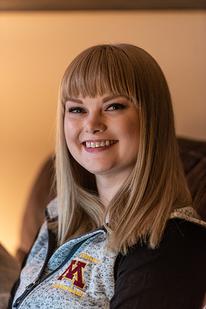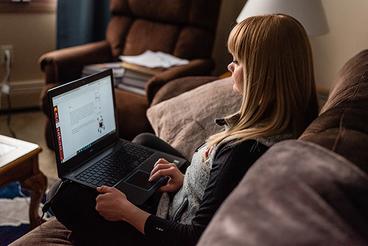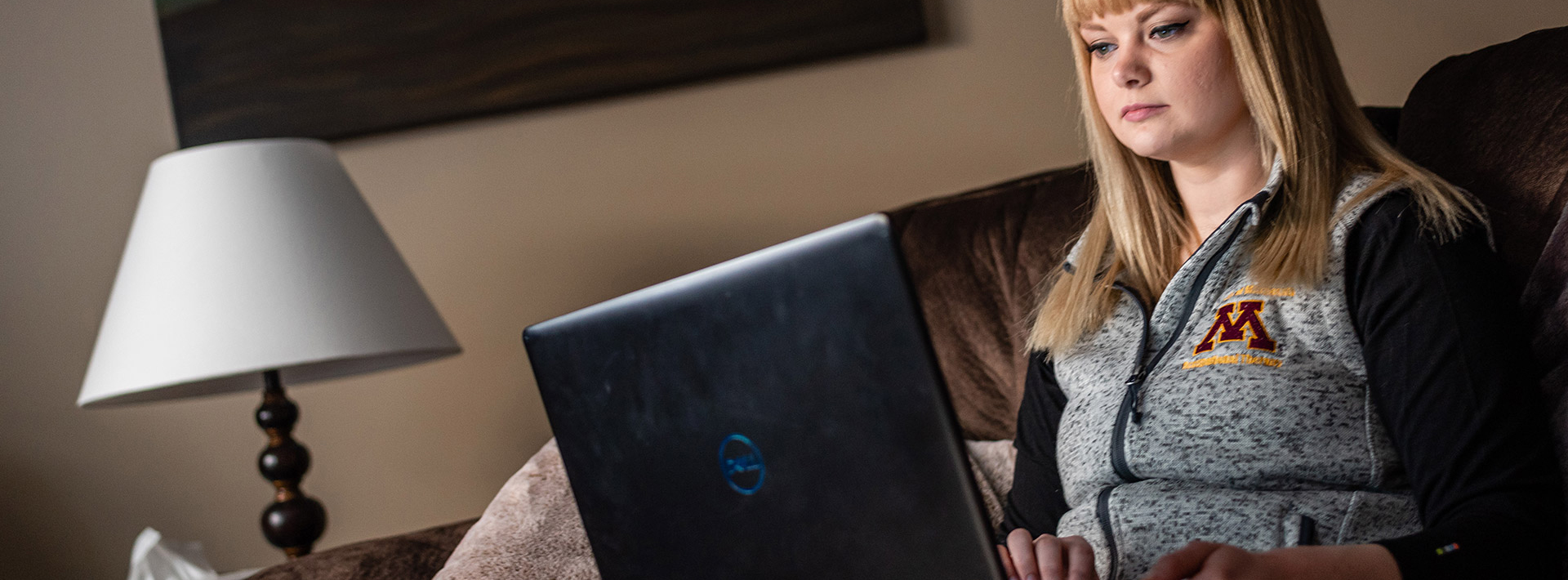
Like millions of others, Andrea Gredvig committed to a university education in 2019, fully unaware of how 2020 would change it.
The University of Minnesota accepted her into its three-year Occupational Therapy Doctorate program, to begin in the fall of 2019, out of its Rochester, MN campus. This opened the door to Andrea’s dream to become a licensed OT, enabling her to help older people adjust their home environments so they can live there, independently.
The program’s longstanding hybrid education structure, which combines in-class education, onsite client fieldwork and on-line access to lectures and other classes, appealed to Andrea, allowing her to visit her parents in the Twin Cities while still accessing her coursework.
“I thrive on structure, but I also love the flexibility that it gives me to choose when and where I do my work,” she says. “I can still see my parents and have home cooked meals while also being able to do all of my work and not miss anything.”
Schools around the world wouldn’t know how the Covid-19 pandemic would disrupt their ability to teach, once they were forced to cancel onsite instruction early in 2020. And students couldn’t know the degree to which the disruption would affect their access to learning.
But the University of Minnesota’s OT program had two things in its favor, as it instituted a Covid-controlled format:

First, its historic expertise and academic success with all aspects of hybrid teaching enabled it to seamlessly switch to on-line only.
And secondly, as experts in creating adaptive therapies, the OT program’s educators put to use their skills to circumvent the challenges of hands-off, socially distant learning.
“We were lucky to have OT professors because that’s what OTs do, we help adapt and modify the activities to fit whatever the needs are,” Andrea says. “Once we switched to fully online, it didn’t feel that different to me. For example, my professor, with his son who was at home, showed us how we would palpate different muscles on a client, and tips on how to find them.”
Andrea awaits the day when in-person OT interaction can resume. But she also believes her present form of on-line learning lends itself to exploring whether – and how – it might translate into the use of telehealth as a way to help the clients she’ll eventually serve.
